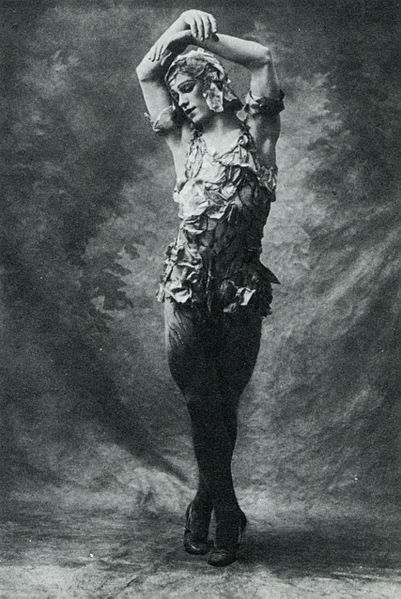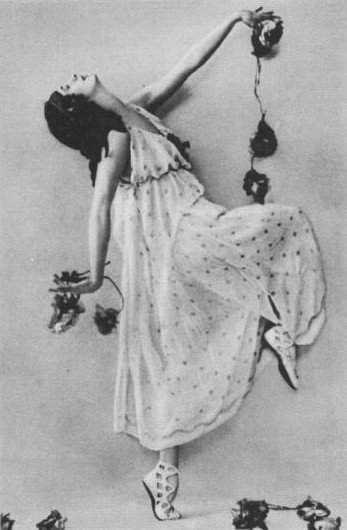
Russia and the Ballets Russes

Anna Pavlova as a bacchante in Bacchanale by Mikhail Mordkin.
The Sergei Diaghilev brought ballet full-circle back to Paris when he opened his company, Ballets Russes. It was made up of dancers from the Russian exile community in Paris after the Revolution. Diaghilev and composer Igor Stravinsky merged their talents to bring Russian folklore to life in The Firebirdand Petrushka choreographed by Fokine. Diaghilev’s next choreographic commissions went to Nijinsky. His First ballet was L’apres-midi d’un Faune (Afternoon of a Faun) to music by Debussy. It was notable for its two dimensional shapes and lack of ballet technique.
After the “golden age” of Petipa, Michel Fokine began his career in St. Petersburg but moved to Paris and worked with Diaghilev and the Ballets Russes.

Vaslav Nijinsky in The Spectre of the Rose, 1911.
Russian ballet continued development under Soviet rule. There was little talent left in the country after the Revolution, but it was enough to seed a new generation. After stagnation in the 1920s, by the mid-1930s that new generation of dancers and choreographers appeared on the scene. The technical perfection and precision of dance was promoted (and demanded) by Agrippina Vaganova, who had been taught by Petipa and Cecchetti and headed the Vaganova Ballet Academy, the school to prepare dancers for the Kirov Ballet in St. Petersburg/Leningrad.
Ballet was popular with the public. Both the Moscow-based Bolshoi and the St. Petersburg (then Leningrad)-based Kirov ballet companies were active. Ideological pressure forced the creation of many socialist realist pieces, most of which made little impression on the public and were removed from the repertoire of both companies later. Some pieces of that era, however, were remarkable. The Romeo and Juliet by Prokofiev and Lavrovsky is a masterpiece. The Flames of Paris, while it shows all the faults of socialist realist art, pioneered the active use of the corps de ballet in the performance and required stunning virtuosity. The ballet version of the Pushkin poem, The Fountain of Bakhchisarai with music from Boris Asafiev and choreography by Rostislav Zakharov was also a hit.
The well-known ballet Cinderella, for which Prokofiev provided the music, is also the product of the Soviet ballet. Κατά τη Σοβιετική εποχή, αυτά τα κομμάτια ήταν κυρίως άγνωστα εκτός the Soviet Union and later outside of the Eastern Bloc. However, after the collapse of the Soviet Union they received more recognition. The 1999 North American premiere of The Fountain of Bakhchisarai by the Kirov Ballet in New York was an outstanding success, for example. The Soviet era of the Russian Ballet put a lot of emphasis on technique, virtuosity and strength. It demanded strength usually above the norm of contemporary Western dancers. When watching restored old footage, one can only marvel at the talent of their prima ballerinas such as Galina Ulanova Natalya Dudinskaya and Maya Plisetskaya and choreographers such as Pyotr Gusev. Russian companies, particularly after World War II engaged in multiple tours all over the world that revitalized ballet in the West. Maiden Tower written by Afrasiyab Badalbeyli is the first ballet in the Muslim East.

